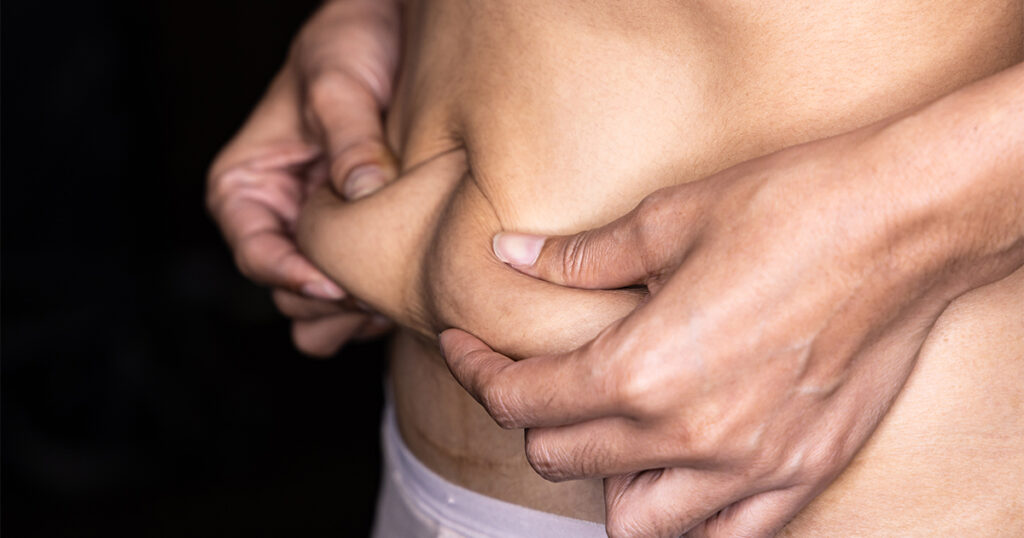Home / Conditions / Loose Skin After Weight Loss
Although it may not seem like much of a trophy, loose skin after weight loss is something to be proud of. All that excess skin means you’ve lost a significant amount of weight, and that’s an accomplishment you should celebrate. You’ve put in the hard work, and now the hardest part of your weight loss journey is behind you. Well done!
Admittedly, however, hanging skin probably isn’t the weight loss reward you were looking for. Loose skin can impact you physically and emotionally, and the first step to dealing with it is understanding why it happened in the first place.

Your skin is a complex organ composed of multiple layers. As you grow, your skin must expand with you. As you lose weight, your skin should also contract with you. The skin’s ability to expand and contract is largely due to two proteins: collagen and elastin. Each plays an important role.
Collagen gives the skin its firmness and structure. The structure provided by collagen keeps the skin from sagging and gives it a plump, youthful look. It is the loss of collagen that can make your cheeks appear hollow as you get older or cause the skin on your neck to sag. Collagen also helps your skin produce new skin cells more quickly and gives it its strength.
Elastin works similarly to elastic, allowing the skin to stretch but then snapping it back in place when the need to stretch is over. Elastin is all about stretch and recoil. A good example is when you smile. Your mouth moves when you do this, and your facial skin moves to accommodate that movement. When you stop smiling, your skin returns to its default position thanks to elastin. If it didn’t, you would look like the Joker from the Batman comics after you smiled for the first time.
When you lose a lot of weight quickly, your fat cells may shrink faster than your skin can adapt. Rapid weight loss doesn’t give the collagen fibers enough time to adjust to the new body size, leading to damage or degradation of collagen. Additionally, rapid weight loss can be stressful to the body, potentially disrupting the normal synthesis of collagen and accelerating the natural decline of collagen production that occurs with age.
Like collagen, elastin can suffer damage when the skin is stretched for prolonged periods and then rapid weight loss eliminates the need for the stretch. The sudden decrease in tension on the skin can lead to a decrease in the production of new elastin fibers and damage to existing ones. The result is skin that lacks the elasticity to conform to the body’s smaller size. Instead, it simply hangs in its old position.
There are several factors that can influence the severity of loose skin after weight loss. These include:
The abdomen is the most common area for loose skin after weight loss, especially after pregnancy or bariatric surgery. The abdominal area often experiences significant changes in volume with weight gain and loss.
The upper arms are also prone to developing loose skin, often referred to as “bat wings.” This tends to occur in the triceps area. The inner and outer thighs can accumulate excess skin as well. Bat wings and skin on the thighs can both prove extremely uncomfortable during physical activity.
It’s also common for the breasts to lose volume and develop loose skin after losing weight. This is because the breasts are largely composed of fatty tissue, which diminishes with overall body fat reduction. This is more common for women, but it does occur in men as well.
Weight loss can also lead to a decrease in the volume of the buttocks, resulting in sagging skin and a change in shape. At the opposite end of your body, you can also experience sagging skin on your face and neck. Skin that may sag includes the jowls, chin, and neck area, sometimes leading to an aged appearance despite the health benefits of weight reduction.